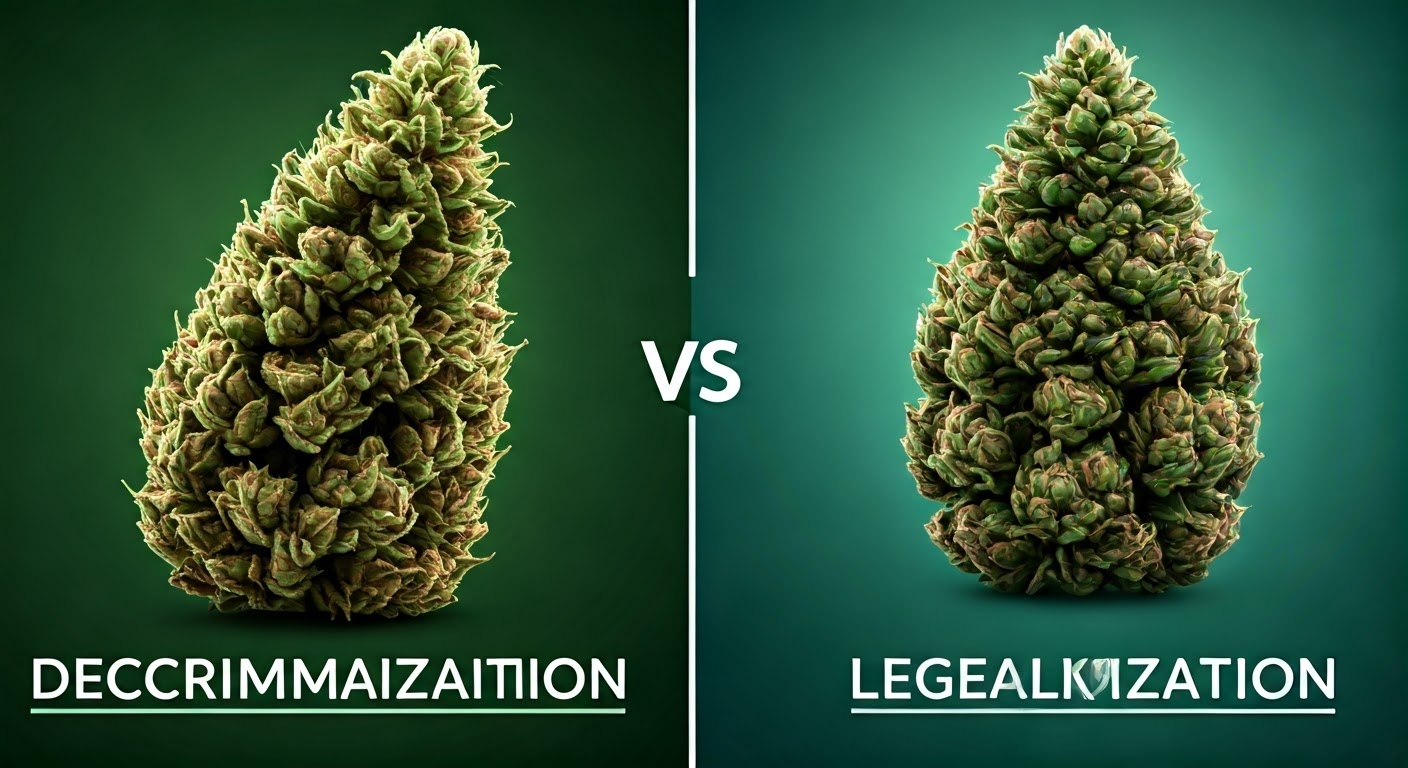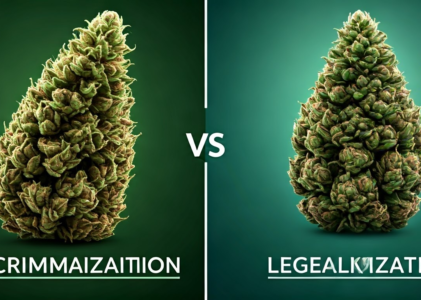Unpacking the Controversy: Drug Legalization Explained

Key Highlights
- The debate surrounding drug legalization continues to spark controversy, prompting a closer examination of potential benefits and drawbacks.
- Proponents argue that legalization could reduce crime, generate revenue, and prioritize harm reduction strategies.
- Opponents express concerns related to public health, addiction rates, and increased drug accessibility, particularly among youth.
- Exploring international drug policies, including success stories and challenges, provides valuable insights.
- The opioid epidemic underscores the complexities of drug policies and emphasizes the need for comprehensive solutions.
Introduction
The legalization of drugs is a hot topic in the United States, especially considering the consequences of drug legalization. People have very different views on it, often shaped by opinion polls. As we talk about drug policy, including the work of the Drug Policy Alliance and the role of state legislature, we need to look at many factors in this debate. This includes looking at the history, discussing the good and bad sides, thinking about what other countries do, and looking at how drug legalization affects the status quo of society and the economy.
Historical Overview of Drug Legislation

The history of drug laws in the United States is complicated. It is deeply linked to social, political, and economic issues. Early laws often went after certain groups. This showed the biases in society and a lack of knowledge about addiction.
As time passed, the focus shifted to banning the use of some drugs. This aimed to stop use and sales. While the intention was good, it led to problems like the rise of illegal markets and many people going to prison.
The Origins of Drug Prohibition
The history of drug prohibition in the United States goes back to the late 1800s and early 1900s. Many factors came together, like moral panic, racial bias, and business interests, to create the “drug war.”
The outcome of alcohol prohibition, even with its problems, made people think that a similar way could work for other drugs. This led to the unfair view of illegal drugs, often tied to certain communities. It also created fear and allowed stricter laws to be put in place.
But the problems that came from banning drugs, like more power for crime groups and a loss of personal rights, have made many people question if this method really works.
Key Milestones in U.S. Drug Policy
Throughout the 20th century, U.S. drug policy has been defined by laws that aim to control illegal drugs. The Drug Enforcement Administration (DEA) was created in 1973 to show the federal government’s strong stance against drug trafficking.
President Richard Nixon started the “war on drugs,” which led to tougher drug laws, stricter penalties, and a focus on criminal justice instead of public health. Mandatory minimum sentences, especially for crack cocaine, increased racial differences in jail rates.
Now, people see the flaws in only using punishment, so there are new efforts that focus on harm reduction. These strategies include needle exchange programs and making naloxone available to help with the serious effects of drug use.
The Case for Drug Legalization
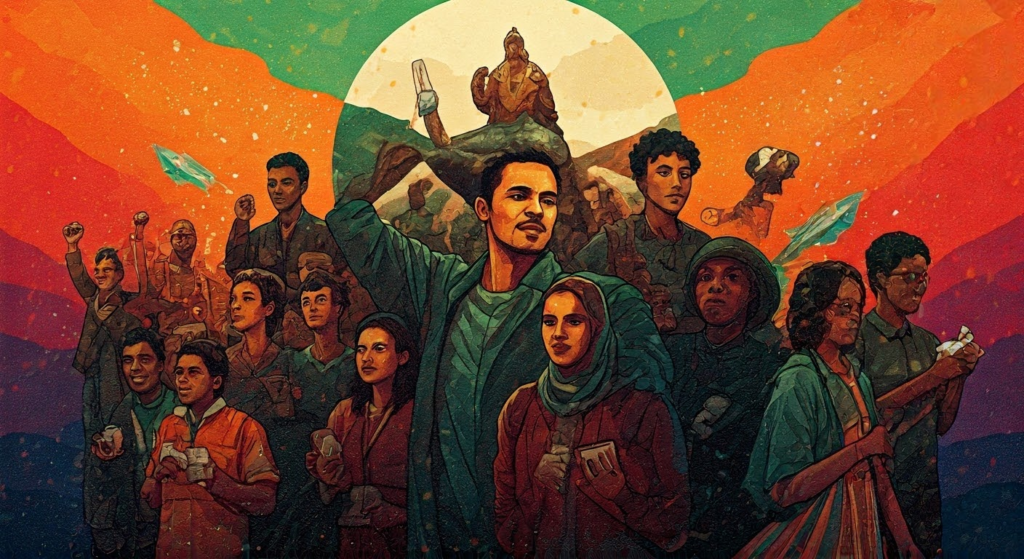
Many supporters think that moving from keeping drugs illegal to having rules for legal use could be better and fairer. They believe we should see drug use as a health issue, not just a problem for the law. Legalization could help with several social and money problems.
People who want legalization point out good things that could happen. These include lower crime rates, more money for public programs, and better plans to reduce harm. Let’s take a closer look at these points.
Potential Benefits of Legalizing Drugs
One strong reason to legalize drugs is that it can help public health. Supporters say that a controlled market for drugs can lead to safer use and lower the chances of using dirty substances.
Also, if drugs are legal, police can spend more time on serious crimes. This may help reduce drug-related violence. This change supports harm reduction, which aims to cut down the bad effects of drug use.
Legalizing drugs could also bring in a lot of money for the government through taxes. This cash could help pay for drug education, prevention, and treatment programs. This way, we can tackle drug use more fully.
Economic Impacts of Drug Legalization
The legalization of drugs would undoubtedly have a profound impact on the economy, creating both opportunities and challenges. As the illicit drug market transitions into a regulated industry, new business ventures and job creation are likely to emerge.
| Potential Economic Impacts | Pros | Cons |
| Tax Revenue | Increased government revenue from drug sales | Potential for price increases, impacting affordability for consumers |
| Job Creation | Growth in industries related to drug production, distribution, and retail | Displacement of workers in the illicit drug market |
| Investment Opportunities | Emerging markets for legal cannabis and other substances | Uncertainty and volatility in a nascent industry |
However, it is essential to consider the potential downsides as well. The price of legalized drugs, influenced by taxes and regulations, could impact affordability for consumers. Moreover, the transition from an illicit to a legal market may result in job displacement for individuals involved in the black market.
Reduction in Crime Rates and Prison Overpopulation
Advocates of legalization believe it could lower crime rates. They say that removing the black market for drugs would let law enforcement focus on more serious crimes. This, in turn, would make communities safer.
Also, legalization could reduce the number of people in prisons, which is a big problem in the criminal justice system. Many people in jail for drug-related crimes, especially for possession, could be freed. This would help ease the crowding in prisons.
With fewer people in jail, resources could be used better. This means more money for rehab and reintegration programs, helping people return to society.
The Arguments Against Drug Legalization

Opponents of drug legalization believe that the risks are greater than the benefits. They argue that making drugs legal could lead to more drug use and higher addiction rates, which would increase costs for public health.
Critics are also worried about how easy drugs would be to get, especially for young people. They think legalization might make drug use seem normal and give the wrong message to society.
Public Health Concerns and Addiction Rates
A big worry from people against legalization is how it will affect public health. They think that making drugs more available could lead to more people getting addicted. This could overload our healthcare systems and make social issues even worse.
These critics mention serious problems caused by drug abuse, like overdoses and health issues, along with the social costs of addiction. They believe that legalizing drugs will send a bad message. This could make more people want to try drugs.
To deal with these worries, we would need a strong public health plan. This should include good prevention, treatment, and harm reduction programs. Still, critics doubt if we can get enough money and support to set up these programs properly.
Social Implications and Drug Accessibility
Opponents of drug legalization talk about more than just public health. They worry about how it could change society. They are especially concerned about young people gaining easier access to drugs. They fear that this could lead to more drug-related problems.
Critics say that making drugs legal might make using them seem normal. This could be especially true for teenagers and young adults. These groups are often more affected by peer pressure, which can lead to risky choices. They believe this might harm public safety and overall well-being.
Moreover, opponents stress that we must protect people who are more vulnerable to drug use. From a human rights viewpoint, they think it is the job of governments to prevent drug use and the dangers that come with it.
The Risk of Increased Usage Among Youth
A big worry for people against drug legalization is how it could affect young people. They think that easier access to drugs will cause more kids to try them. This might lead to more addictions and other problems.
Critics feel it is essential to protect young people. Their brains are still growing, so they should stay away from the harmful effects of drugs. They believe that public policy should work to stop drug use, especially for vulnerable groups.
Opponents say that legalizing drugs could give the wrong idea to kids. It might make drug use seem normal and go against efforts to promote healthy lifestyles. They think that having strict drug laws is crucial to stop drug use and keep young people safe from harm.
Comparing International Drug Policies
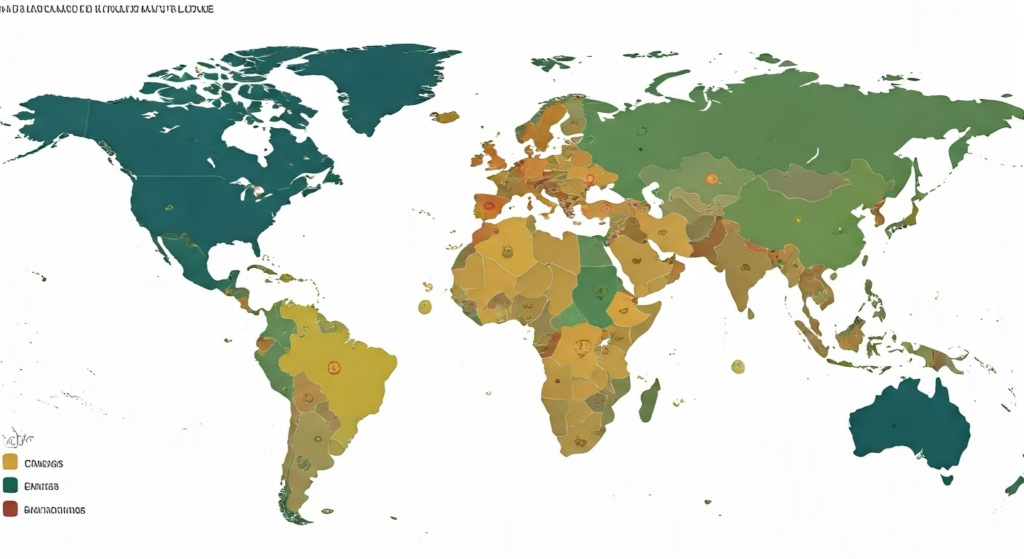
To fully understand the drug legalization debate, we should look at different countries and their views. Countries have different rules, from relaxed policies to strong bans. Each approach has important lessons.
By studying the successes, problems, and surprises of these policies, we can see how complicated drug legalization is. Learning from other countries can help us make better drug policy decisions.
Success Stories from Countries That Have Legalized Drugs
Portugal is often seen as an example of good drug decriminalization. Since it removed penalties for all drugs in 2001, the country has seen fewer drug-related deaths, lower HIV infections, and a drop in drug use overall.
Uruguay’s cannabis market is also gaining attention. They focus on public health and harm reduction. By controlling how cannabis is made and sold, Uruguay hopes to lessen the black market and encourage responsible use.
These cases show that new drug policies can work. However, we need to remember that their long-term impacts are still being studied. Factors like local culture and available services may play a big role in how successful these policies later become.
Lessons from Countries with Strict Drug Laws
Countries like Sweden and Singapore, which have strict drug laws, point to their low drug use rates. They believe this shows that their zero-tolerance policies work well. They think these strong rules stop people from using drugs.
On the other hand, some critics say these policies can cause problems. They mention that strict laws may push drug use underground. This action makes it harder to help people who need harm reduction services.
There are also worries about human rights, such as possible violations of privacy and due process. Looking at different ways countries handle drug policy shows that it’s a complicated issue. It shows there is a need for careful and informed solutions.
Medical Marijuana and CBD: A Focal Point in the Legalization Debate
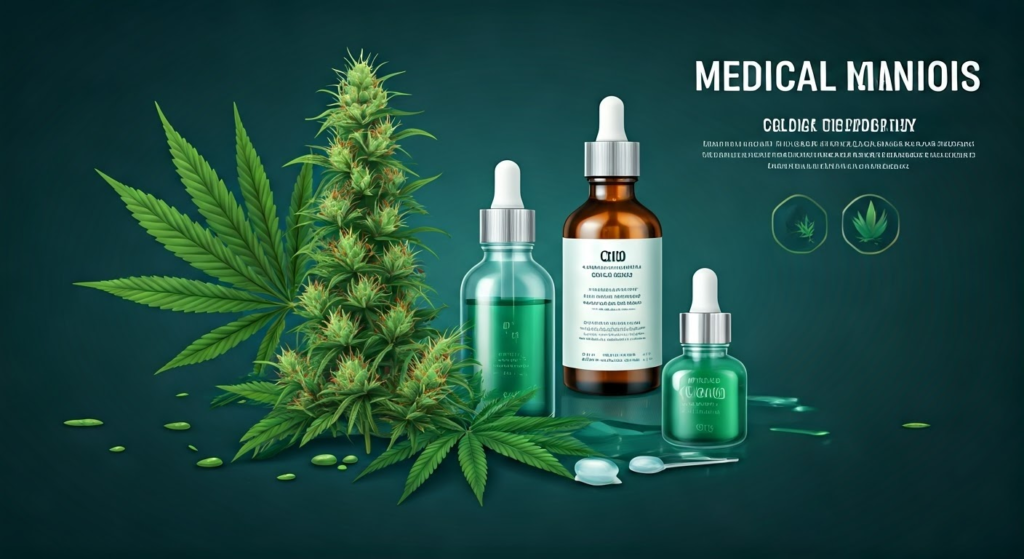
The legalization of medical marijuana and CBD is a big part of the drug legalization discussion. Research is looking at the possible health benefits of cannabis and its products. This has led to more public support for allowing medical use.
Still, there are challenges. It’s difficult to understand the rules, match state and federal laws, and make sure patients can access it safely and fairly.
Therapeutic Benefits and Medical Research
Proponents of medical marijuana believe it can help with different symptoms and conditions. These include chronic pain, nausea, and anxiety. Research shows that cannabinoids, which are the active parts in cannabis, work with the body’s endocannabinoid system. This system helps manage pain, mood, and inflammation.
Medical marijuana seems helpful for conditions like epilepsy, multiple sclerosis, and post-traumatic stress disorder (PTSD). While we still need more research to fully grasp its healing effects, many personal stories and early studies indicate it may provide relief for some people.
As we learn more about medical marijuana, it is important to understand how well it works, the correct amounts to take, and possible side effects. We also need to look deeper into the long-term effects of using cannabis, especially for specific groups of patients.
Regulatory Challenges and State vs. Federal Laws
Despite more people supporting medical marijuana, there are still many rules that make things hard. State laws allow medical or recreational cannabis, but federal law still says cannabis is a Schedule I drug. This creates confusion and legal problems.
Businesses in the cannabis industry, patients wanting medical marijuana, and law enforcement agencies trying to follow different rules all face challenges.
It’s important to fix these issues so there is a clear set of rules. If cannabis is legalized or its classification is changed by the federal government, it could solve this problem. This would help with research, create standard rules, and give more access to patients.
Opioids Crisis: A Testament to Failed Drug Policies?

The serious opioid crisis in the United States has taken many lives. This situation has led to strong demands for a closer look at current drug policies. Some people believe that the focus on punishment and crime has made the problem worse.
One reason for this crisis is that doctors prescribed too many opioid painkillers. Government officials and pharmaceutical companies, including the Oregon Health Authority, played a role in this. Also, there is not enough focus on treating pain properly, leading to a growing sense of desperation among those suffering from substance use disorder, including homeless people. This has caused more people to become addicted and overdose. The crisis shows how public health, medical practices, and drug policies all connect and affect each other.
Understanding the Opioid Epidemic in the U.S.
The opioid crisis in New York City and the United States is a serious public health problem that also creates market opportunities for illegal drug suppliers, reflecting the broader drug problem, as discussed in The New Yorker and The New York Times. It involves a rise in opioid use, addiction, and overdose deaths. Several things have led to this situation, including giving out too many opioid painkillers, the rise of illegal synthetic opioids like fentanyl, and issues in the healthcare and criminal justice systems.
This crisis greatly harms individuals, families, and communities across the country. The costs are very high. They include healthcare bills, lost work time, and the pressure on social services.
To tackle the opioid crisis, we need a detailed plan. This plan should include public health efforts, harm reduction, and better access to treatment and recovery services. It is also important to deal with the root causes of opioid addiction, such as poverty, trauma, and lack of job opportunities.
Revisiting Pain Management and Prescription Practices
The overuse of opioid painkillers helped cause the opioid crisis. To fix this problem, we need to rethink how we manage pain and make new rules about prescriptions. Doctors need better support and training to prescribe opioids safely.
Looking into other ways to manage pain, like physical therapy, acupuncture, and mindfulness, can lower the need for opioids. Adding these methods to treatment plans can stop more people from becoming addicted.
Also, making medication-assisted treatment (MAT) more available for those with opioid use disorder is very important. MAT uses medicines like methadone or buprenorphine, which effectively decrease cravings and withdrawal feelings, and lower the chance of overdose.
Drug Decriminalization vs. Legalization
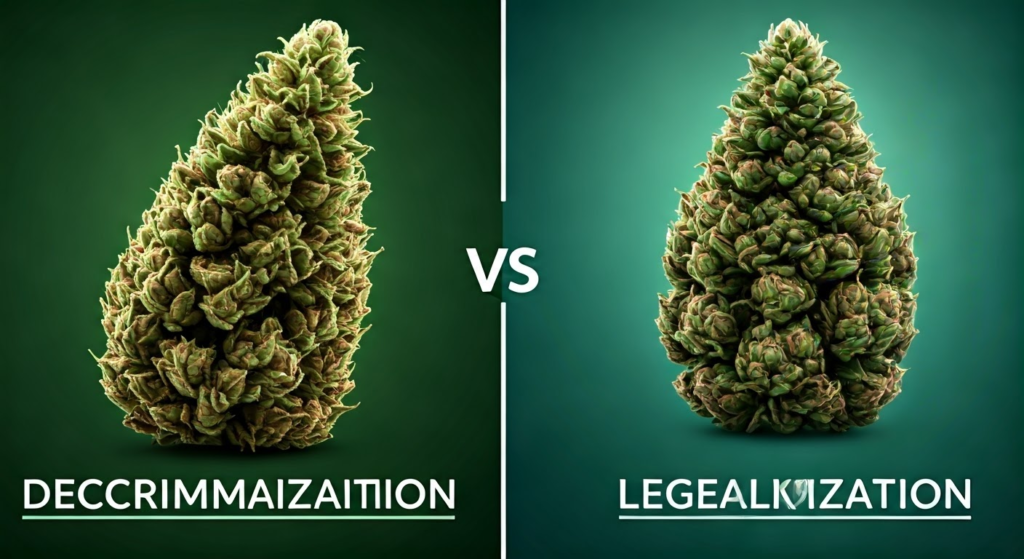
In the discussion about changing drug laws, it is important to understand the difference between decriminalization and legalization. Many people use these terms as if they mean the same thing, but they have different meanings and effects on drug use and control.
Decriminalization means that there are fewer or no criminal penalties for having small amounts of drugs for personal use. This often comes with civil fines or other non-criminal penalties. Legalization means fully regulating and controlling how drugs are made, sold, and used, much like alcohol or tobacco.
Definitions and Key Differences
Drug decriminalization treats drug use as a public health issue. It aims to reduce criminal penalties for small amounts of drugs. Supporters say this change can help direct more resources to treatment, prevention, and harm reduction programs.
On the other hand, drug legalization takes a bigger step. It creates a legal system to control how drugs are made, sold, and used. This method tries to move the drug trade away from the black market. It also seeks to cut down crime and earn tax money.
The main difference is how the government controls drugs. With decriminalization, producing and selling drugs usually stays illegal. With legalization, the government sets up rules and keeps an eye on the market.
Case Studies: Portugal and Oregon
Portugal’s decriminalization policy started in 2001. It’s seen as a successful way to handle drug possession. Instead of facing fines or jail time, people caught with small amounts of drugs meet with a “dissuasion commission.” This group includes health and social work professionals who help guide them.
In 2020, Oregon became the first U.S. state to decriminalize small amounts of all drugs with Measure 110. This measure also hopes to improve access to addiction treatment and harm reduction services.
It’s too soon to know how Oregon’s measure will impact the long term. Still, early data shows there may be fewer drug arrests and more people seeking treatment. These examples are important for understanding both the benefits and challenges of decriminalization.
The Role of Law Enforcement and the Justice System
The discussion about drug legalization affects law enforcement and the criminal justice system a lot. Moving away from banning drugs would mean changing what law enforcement focuses on and how they plan their work.
Making drugs legal or removing criminal penalties could help save resources. This way, officers could put more effort into serious crimes. However, this change would mean law enforcement needs to adjust their training and methods to fit the new situation.
Impact of Drug Laws on Policing and Arrest Rates
Current drug laws often hurt marginalized communities more than others. This leads to unequal arrest rates and more people from these communities getting sent to jail. Many people say that enforcing drug laws adds to systemic racism and breaks down trust between law enforcement and communities of color.
Moving toward decriminalization or legalization may help fix these issues. It could remove the reasons behind many low-level drug crimes. Still, there are worries about possible racial bias when new rules are put in place and enforced.
It is important to make sure the enforcement is fair and to look at the social issues that lead to race-related problems in the criminal justice system. These points are key for any changes to drug policy.
Alternatives to Incarceration for Drug Offenders
There is more awareness of the problems caused by prison sentences. Many people now support finding other options for drug offenders. These options focus on understanding why people use drugs and helping them to fight addiction.
Programs, like drug courts and treatment courts, let people skip prison. Instead, they can take part in required treatment, counseling, and other help services.
By putting money into local treatment centers, traditional treatment providers, support groups, and inpatient treatment reintegration programs, we can give people what they need to create a continuum of care that helps them get back into society. These alternatives deal with the real reasons behind drug use, including hard drugs, and offer support, as emphasized by Sommer Wolcott. This way, we can help break the cycle of addiction and lower the chance of reoffending.
Economic Considerations in the Drug Legalization Debate
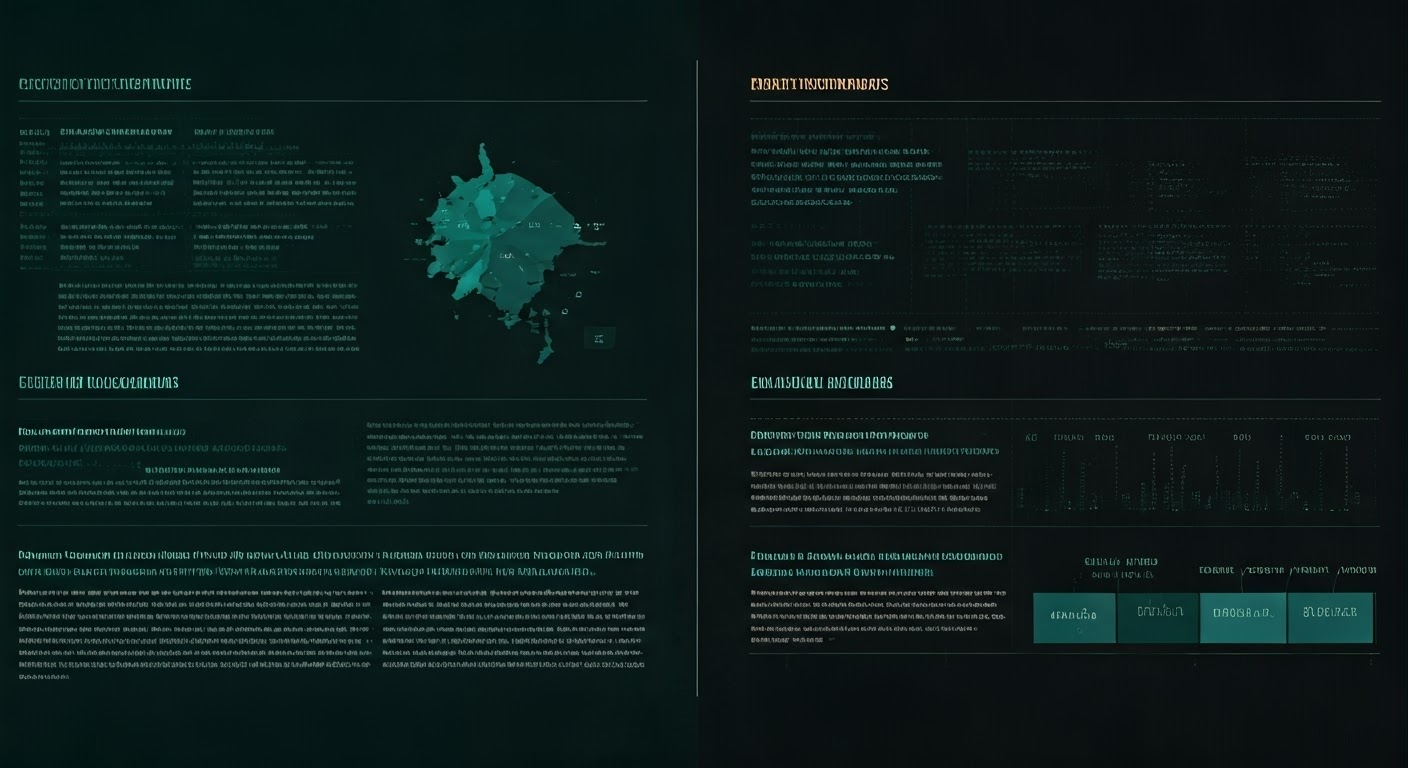
The economic impact of legalizing drugs is important and involves many factors. Supporters say that legalization could bring in a lot of tax money, create new jobs and businesses, and lower costs for law enforcement and prisons.
On the other hand, critics believe we need to think about the costs linked to more drug use. This includes healthcare costs, decreased productivity, and the need for social services. How legalization affects the economy will depend on several things, like rules, tax rates, and market conditions.
The Cost of the War on Drugs to the Economy
The long “war on drugs” has hurt the U.S. economy. The federal government spends billions every year on drug enforcement, stopping drug traffic, and housing inmates.
These costs cover keeping police agencies running, prosecuting drug crimes, and housing people who went to jail for drug-related crimes. Many say the war on drugs takes money away from vital social programs like education and healthcare.
Supporters of drug legalization believe this money could be better used for treatment, prevention, and harm reduction. They think that moving away from banning drugs could lower costs for taxpayers and open up funds for better solutions.
Potential Revenue from Legalized Drugs
One common reason people support the legalization of cannabis and drug legalization is the chance to earn a lot of tax money from selling small amounts of illicit drugs. If governments could sell and tax drugs, they could make a good income. This money could help pay for things like education, healthcare, roads, or even drug treatment and programs to prevent drug use.
How much money is made would depend on things like the tax rate, how many people buy legalized drugs, and how well rules stop illegal sales in the black market.
On the other hand, some people believe that making money should not be the main focus in drug policy. They think keeping people healthy and safe is way more important than any possible profit.
Social Equity and Drug Law Reform
Addressing the unfairness linked to drug laws and how they are enforced is important for real drug policy reform. The “war on drugs” has hurt communities of color the most, leading to unfair differences in arrest rates, convictions, and sentencing.
Changing drug laws gives us a chance to fix these problems and support social equity. This needs to focus on restoring justice, fixing the negative effects of drug convictions, and making sure that the communities most damaged by these laws are not forgotten.
Addressing Racial Disparities in Drug Convictions
The enforcement of drug laws has faced criticism because it affects communities of color unfairly. Even though people from different races use drugs at similar rates, Black and Hispanic individuals are more often arrested, convicted, and sent to prison for drug-related crimes compared to white individuals.
This shows the systemic racism in the criminal justice system and the biases in policing. Issues like racial profiling and inequality in sentencing have made social unfairness worse during the war on drugs.
To fix this, drug policy reform needs to tackle these issues. It should focus on fair enforcement practices, get rid of discriminatory sentencing guidelines, and support community-based alternatives to prison. These alternatives should prioritize helping people recover and reintegrate into society.
Efforts to Expunge Criminal Records
For people with past drug convictions, the long-term effects can be serious. These effects often make it hard to find work, get housing, or access education and other chances. This cycle of disadvantage keeps going and makes it tough to reach social fairness.
Cleaning or hiding criminal records for some drug offenses is an important step for justice. By getting rid of the shame of a criminal record, people can better rebuild their lives.
In some states, there are changes in law that make the record-sealing process easier for eligible offenses, like having small amounts of drugs. Making it easier to get records cleaned can help promote social fairness by taking away obstacles and giving people a fresh start.
Public Opinion and Social Attitudes Towards Drug Legalization
Public opinion and attitudes about drug legalization have changed a lot lately. People are now more aware that banning drugs has its limits. With changing views on drug use and addiction, many support new ways to deal with these issues.
Still, opinions differ widely between different groups of people, areas, and political beliefs. To create good drug policies that match what society wants, we need to understand these different views.
Changing Perceptions and Demographic Trends
Public opinion on drug legalization has changed a lot in recent years. More people in America are looking at the limits of prohibition and are open to new views on drug use and addiction.
Trends show that attitudes are changing with different generations. Younger people, who have seen the issues with the war on drugs, are more in favor of legalization or decriminalization.
As more states try out legalization or decriminalization, people’s views are likely to keep changing. Data and real experiences will help shape discussions among the public and influence future drug policy decisions.
Influence of Media and Advocacy Groups
The media has a strong effect on how people think about drug legalization. News stories and entertainment can shape what the public feels and believes about drug use and its effects.
Groups that support or oppose this issue work hard to educate the public. They run campaigns, lobby, and reach out through media to share their views. Social media is a key tool that helps spread information and gain support.
The impact of media and advocacy groups shows how important it is to use critical media skills. We need to fact-check and take part in informed talks about drug policy. It is important to look at different views and form opinions based on correct information and strong arguments.
The Future of Drug Policies in the United States
The future of drug policies in the United States is unclear. Many Americans are unhappy with how things are now. The problems caused by banning drugs and the serious effects of the opioid crisis have led people to want changes.
As we look ahead, we need to focus on public health, social fairness, and methods that are based on evidence. We should learn from what other countries have done. It is important to invest in research and have meaningful talks about this complicated issue.
Ongoing Legislative Efforts and Proposals
At both the state and federal levels, there is a push to change drug policies. Many states have made recreational cannabis legal. Other states have made it easier to get medical marijuana or have reduced penalties for its use.
These different approaches at the state level can teach us a lot. They show the possible good and bad sides of various methods. The information gathered from these experiences can help shape decisions about federal policies.
In Congress, more and more lawmakers from both parties support changing federal drug laws, especially for cannabis. There are ideas to either remove cannabis from the controlled substance list or change its status. There are also discussions on increasing chances for research on cannabis.
Predictions and Trends for Drug Law Reform
Predicting the future of drug law changes is not easy. However, some trends show that we are moving away from banning drugs. More and more people support legalizing or decriminalizing drugs. This change is partly due to younger generations thinking differently about this issue.
People are also beginning to see drug addiction as a public health problem, not just a matter for the criminal justice system. This new view pushes for more treatment, prevention, and harm reduction plans.
Moreover, there are economic reasons for legalizing drugs. Benefits like tax revenue and job growth are becoming more important. As more states try out and review their own drug laws, the evidence for reform will grow. This could lead to more significant changes at the federal level.
Conclusion
In the complicated discussion about drug legalization, many factors come into play. These factors include history, possible economic effects, and fairness in society. Different stories connect with both problems and chances. As the talk continues, we must understand the details of law enforcement, public health, and how society views drug policies. By looking at how other countries handle these issues and exploring the medical marijuana debate, we reveal many different opinions. As we think about the future of drug laws in the United States, finding a middle ground between regulating and reforming laws is very important to create a fairer and clearer approach.
Frequently Asked Questions
What is the difference between decriminalization and legalization?
Decriminalization means that the penalties for drug possession are lessened or removed completely. These penalties are often replaced with civil fines. Legalization is different. It involves setting rules for the production, sale, and use of drugs. This is similar to how alcohol or tobacco are managed.
How has drug legalization impacted states where it’s been implemented?
In places where recreational cannabis is legal, studies show different effects on public health and crime rates. Tax income usually goes up, but we need more research to understand the long-term impacts.
Can drug legalization reduce crime rates?
Proponents say that making it legal can help lower crime. They believe it can break up the black market. On the other hand, opponents worry it might cause more drug incidents. How crime rates change may rely on the type of drug and the rules in place.
What are the economic benefits of legalizing drugs?
Potential economic benefits can include raising tax revenue, creating jobs in new industries, and cutting law enforcement costs. But we should also think about the possible costs linked to more drug use.
How do drug laws affect minority communities differently?
Drug laws have affected minority communities more than others. This has led to differences in arrest rates, convictions, and sentencing for these groups. This is true even though people use drugs at similar rates in all racial groups.
https://doi.org/10.1016%2Fj.neuropharm.2017.11.004
https://pubmed.ncbi.nlm.nih.gov/25744618
https://pubmed.ncbi.nlm.nih.gov/27931907
https://api.semanticscholar.org/CorpusID:1403033
https://www.theguardian.com/society/2010/apr/04/eric-carlin-mephedrone-classification
https://www.theguardian.com/politics/2009/oct/30/drugs-adviser-david-nutt-sacked
https://www.ncbi.nlm.nih.gov/pmc/articles/PMC3943474
https://www.oas.samhsa.gov/nhsda/PE1996/rtst1008.htm
https://abcnews.go.com/US/story
https://news.google.com/newspapers
https://www.washingtonpost.com/wp-dyn/content/article/2006/12/01/AR2006120101654.html
